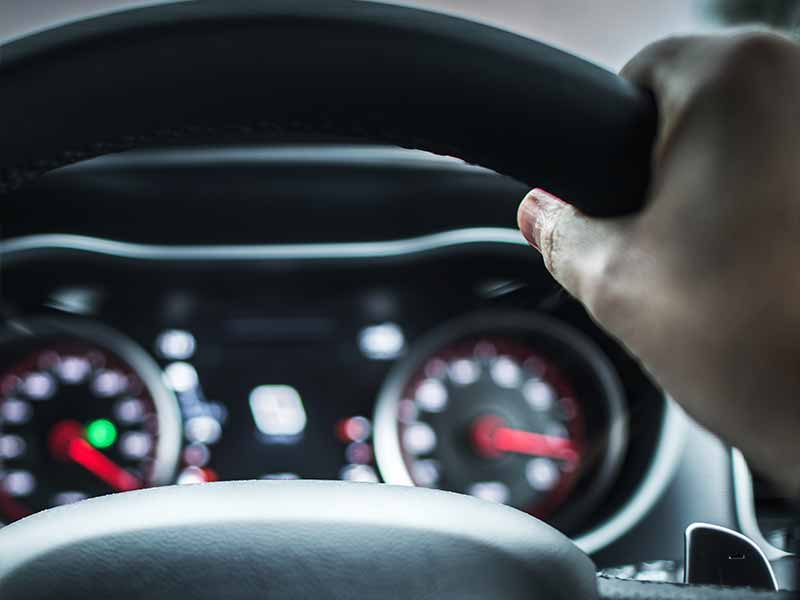Ever been driving and suddenly your car feels like it’s lost its get-up-and-go, all while a mysterious light pops up on your dashboard? You’re not alone, and it’s not just frustrating—it can be downright scary. But don’t panic; understanding what’s happening can be your first step to solving the problem.
Traction Control Light On And Car Won’t Accelerate
When the traction control light is on and your car won’t accelerate, it’s often due to a malfunction in the traction control system. This can affect wheel speed sensors, the steering angle sensor, or the traction control module, leading to reduced engine power and limited acceleration.
In this article, we’ll dive deep into the world of traction control systems, exploring how they work, why they’re crucial for your safety, and what to do when things go wrong. We’ll cover common reasons for the traction control light coming on, how it affects your car’s acceleration and engine, and steps you can take to diagnose and fix the issue.
Let’s take a closer look.
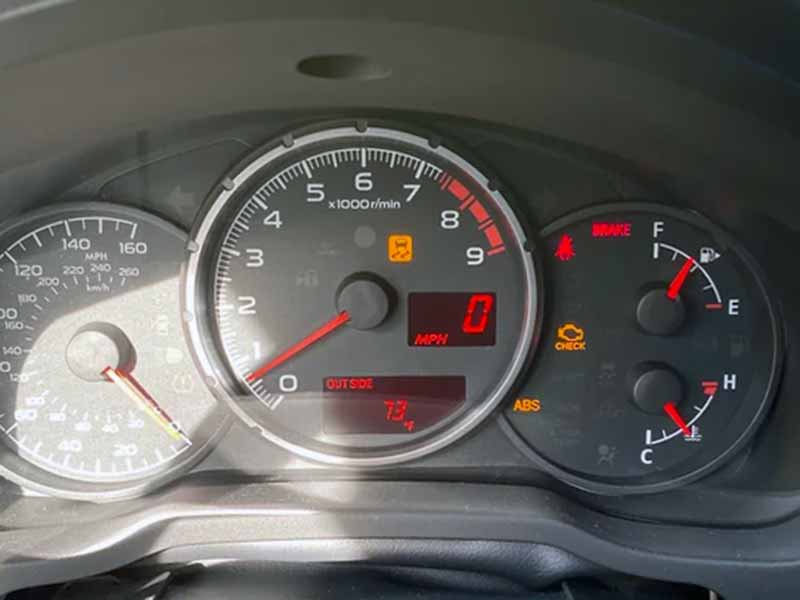
Common Reasons for Traction Control Light and Loss of Acceleration
When the traction control light comes on your dashboard, it’s like your car is saying, “Hey, something’s not right here!” This light is a warning that there might be a problem with your traction control system. Sometimes, you might also notice that your car isn’t accelerating like it should. Let’s dive into some common reasons why this happens.
Faulty Wheel Speed Sensor
- What They Do: A wheel speed sensor monitors how fast each of your wheels is spinning. They send this information to the traction control computer.
- The Problem: If one or more of wheel speed sensors are faulty, they can send incorrect information, causing your traction control to act up.
- Impact on Tires: A bad reading from wheel speed sensor can make your tires lose grip when they actually shouldn’t, affecting your driving safety.
Bad Steering Angle Sensor
- What It Does: The steering angle sensor keeps track of the direction in which you’re steering.
- The Problem: If this sensor is not working correctly, your traction control might get confused and not know how to help your tires maintain grip.
- Impact on Tires: A faulty steering angle sensor can cause unnecessary wear and tear on your tires, as your traction control may apply brakes or reduce power at the wrong times.
Faulty Traction Control Module
- What It Does: This is the “brain” of the traction control system. It takes information from all the sensors and decides what action to take.
- The Problem: If this module is faulty, the whole system can go haywire, leading to poor tire performance and even safety risks.
- Impact on Tires: A malfunctioning module can cause erratic behavior in your tires, like unnecessary wheel spin or braking, which can wear out your tires faster.
Real-World Consequences
Imagine you’re driving on a highway and suddenly your traction control light comes on, and you notice your car isn’t accelerating properly. This could be due to any of the issues mentioned above. In such a situation, your tires might not grip the road well, making it risky for you and others on the road.
What to Do Next?
If you experience these issues, it’s crucial to get your car checked by a professional. They can diagnose the problem—whether it’s a sensor issue or a faulty module—and help you fix it, ensuring your tires and traction control work in harmony for a safer drive.

Can Traction Control Affect Acceleration?
You might be wondering, “Why is my car not speeding up like it usually does?” Well, your traction control could be the reason. This system is designed to help your tires maintain grip, but sometimes it can also affect how quickly your car accelerates.
How Traction Control Impacts Acceleration
Here’s a step-by-step explanation of how traction control can affect your car’s acceleration:
- Sensing Wheel Spin: When you press the gas pedal, your car’s wheels start to spin faster. If one wheel spins too fast, the wheel speed sensors will detect it.
- Reducing Engine Power: To prevent that wheel from losing grip, the traction control computer may reduce the engine power. This means your car won’t accelerate as quickly as you might expect.
- Applying Brakes: In some cases, the system might apply the brakes to the spinning wheel, which can also slow down your acceleration.
Why This Matters for Your Tires
From a tire expert’s perspective, this is crucial for several reasons:
- Preventing Wear and Tear: Rapid acceleration can cause your tires to wear out quickly. By controlling acceleration, the traction control system can extend the life of your tires.
- Maintaining Optimal Grip: If a tire loses grip due to rapid acceleration, it can affect your car’s stability. Traction control ensures that your tires maintain optimal grip, enhancing your safety.
Real-World Scenarios
Let’s say you’re at a stoplight, and when it turns green, you press the gas pedal to accelerate quickly. If your traction control senses that one wheel is spinning too fast, it might reduce the engine power or apply the brakes to that wheel. As a result, you’ll notice that your car doesn’t speed up as fast as you expected.
Should You Be Concerned?
If you notice that your car isn’t accelerating like it should, it’s not always a cause for alarm. The traction control system is designed to prioritize your safety over rapid acceleration. However, if you find that the system is overly sensitive or causing issues frequently, it might be time to get it checked by a professional.
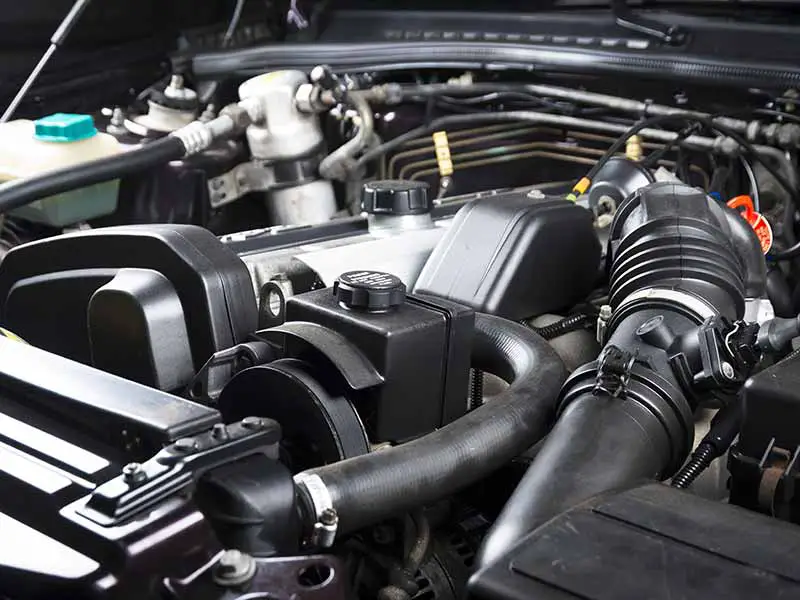
Does Traction Control Affect the Engine?
You might be asking, “Why does my car feel less powerful sometimes?” The answer could be related to your traction control. While the primary job of traction control is to help your tires maintain grip, it can also have an impact on your engine’s performance.
How Traction Control Interacts with the Engine
Here’s how the traction control system can affect your engine:
- Reducing Engine Power: When wheel speed sensors detect a wheel spinning too fast, the traction control may decide to reduce the engine power. This helps the spinning wheel regain grip but can make the car feel less powerful.
- Intervening in Gear Changes: In some advanced systems, traction control can even interact with the car’s transmission to change gears, aiming to maintain optimal grip.
The Impact on Engine Power and Tires
From a tire expert’s point of view, this interaction between the engine and traction control is important for a few reasons:
- Consistent Tire Performance: By controlling the engine’s power output, the traction control system ensures that your tires are not subjected to excessive force, which can lead to rapid wear.
- Safety: Reducing engine power can help prevent situations where a loss of tire grip could lead to a dangerous skid or slide.
Real-World Implications
Imagine you’re driving uphill on a slippery road. You press the gas pedal to give your car the power it needs to climb. However, the traction control system senses that one wheel is spinning too fast and decides to reduce engine power. While this might make your climb slower, it ensures that all wheels maintain good grip, making your journey safer.
When to Seek Professional Help
If you notice a frequent loss of engine power and you suspect it’s due to the traction control system, it’s a good idea to consult a professional. They can check whether the system is working as it should or if it needs adjustments or repairs.
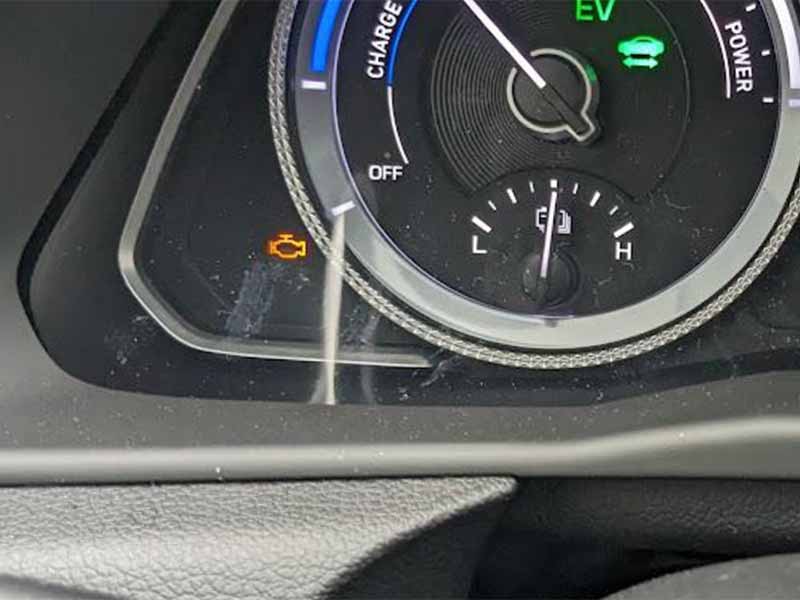
Can Traction Control Cause a Car to Go Into Limp Mode?
First things first, let’s talk about what “limp mode” actually is. Limp mode is a safety feature in many modern cars that limits the vehicle’s performance to prevent further damage. When your car goes into limp mode, you’ll notice a significant loss of power, and you won’t be able to drive faster than a certain speed. It’s like your car is saying, “Something’s wrong; let’s slow down until we figure it out.”
How Traction Control Can Trigger Limp Mode
Now, how does traction control fit into this picture? Here’s how:
- Sensor Malfunctions: If the wheel speed sensors or the steering angle sensor send incorrect data, the traction control module might get confused. This can trigger the car’s computer to activate limp mode as a precaution.
- Faulty Traction Control Module: If the “brain” of your traction control—the traction control module—is not working properly, it can send incorrect commands, causing the car to go into limp mode.
The Importance for Tires and Overall Safety
From a tire expert’s perspective, limp mode is a double-edged sword:
- Prevents Further Damage: By limiting speed and power, limp mode helps prevent further wear and tear on your tires and other components.
- Immediate Attention Required: However, if your car goes into limp mode, it’s a sign that something is seriously wrong and needs immediate attention. Ignoring it can lead to more severe tire and engine issues.
Real-World Example
Let’s say you’re driving on a highway, and suddenly your traction control light comes on, followed by a noticeable drop in speed and power. Your car has likely entered limp mode due to a perceived issue with the traction control. In this situation, it’s crucial to pull over safely and seek professional help.
What Should You Do?
If your car goes into limp mode, the first thing to do is get to a safe location and turn off the engine. Restarting the car might reset the system temporarily, but it’s essential to get your vehicle checked by a professional to diagnose and fix the underlying issue.
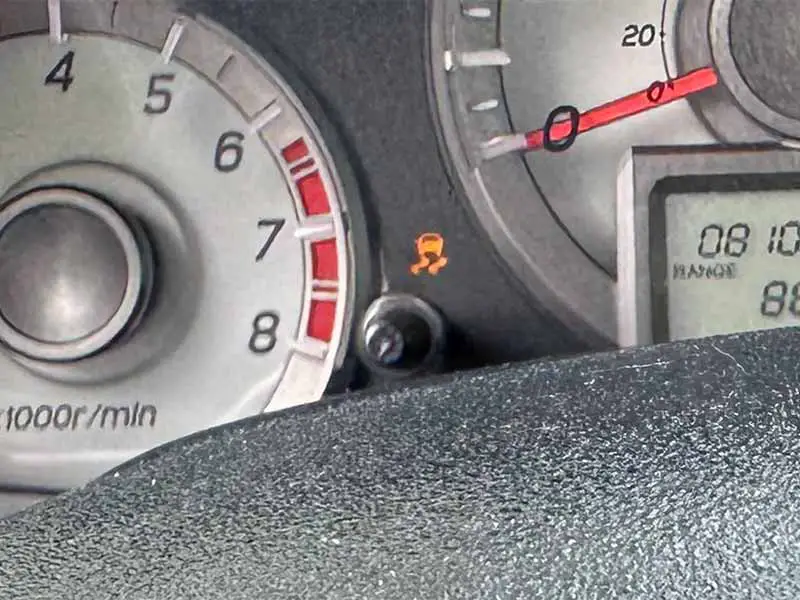
What To Do When Traction Control Light Comes On
When the traction control light illuminates on your dashboard, it’s your car’s way of telling you that something might be off with the car’s traction control system components such as a bad wheel speed sensor. This is a crucial moment, especially if you also notice that your car isn’t accelerating as it should.
Steps to Diagnose the Issue
If you find yourself in this situation, here are some steps you can take:
- Check Your Dashboard: Besides the traction control light, look for other warning lights that might be on, such as the check engine light. This can give you more clues about what’s wrong.
- Pull Over Safely: If possible, find a safe spot to pull over and turn off your car. This can sometimes reset minor electronic glitches.
- Consult the Owner’s Manual: Your car’s manual often has a section that explains what each warning light means and what you should do.
How to Reset the Traction Control Light
If you’ve pulled over and turned off your car, you might be wondering how to reset the traction control light. Here’s how:
- Restart the Car: Sometimes, simply restarting the car can reset the system and turn off the traction control light.
- Use an OBD Scanner: If you have an On-Board Diagnostics (OBD) scanner, you can plug it into your car to read any error codes. This can help you understand what might be wrong.
- Visit a Mechanic: If the light doesn’t go off or comes back on, it’s best to consult a professional for a thorough diagnosis and repair.
The Role of Tires in This Scenario
From a tire expert’s perspective, it’s essential to address a lit traction control light promptly because:
- Tire Wear: Ignoring the issue can lead to uneven tire wear, as the traction control system may apply brakes or reduce power inconsistently.
- Safety Risks: A malfunctioning traction control system can compromise your tires’ grip on the road, posing safety risks.
Real-World Advice
Imagine you’re driving in heavy rain, and your traction control light comes on. Pull over safely, turn off the engine, and restart the car. If the light goes off, proceed with caution. If it stays on, it’s best to drive slowly to the nearest mechanic for a check-up.
Resources
Below are some links you may find helpful when learning about tires
- How to reset a traction control light – WikiHow
- My traction control light comes on and the car stops accelerating – Your Mechanic
Final Thoughts
Understanding your car’s traction control system is not just for gearheads; it’s essential knowledge for anyone who drives. This system plays a critical role in your safety, helping your tires maintain optimal grip and preventing dangerous skids.
When the traction control light comes on and your car won’t accelerate, it’s usually a sign that something in this system needs attention. Whether it’s a faulty sensor or a more complex issue with the traction control module, acting promptly can prevent further problems and keep you safe on the road.
Good luck and happy motoring.
